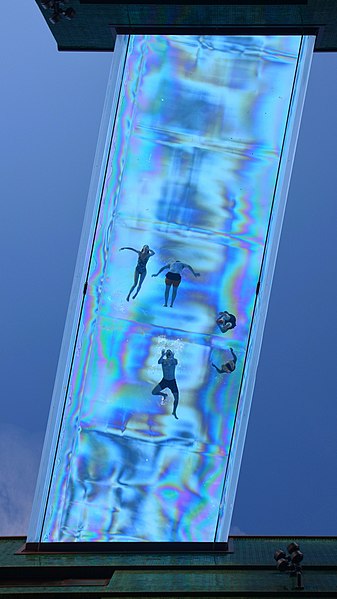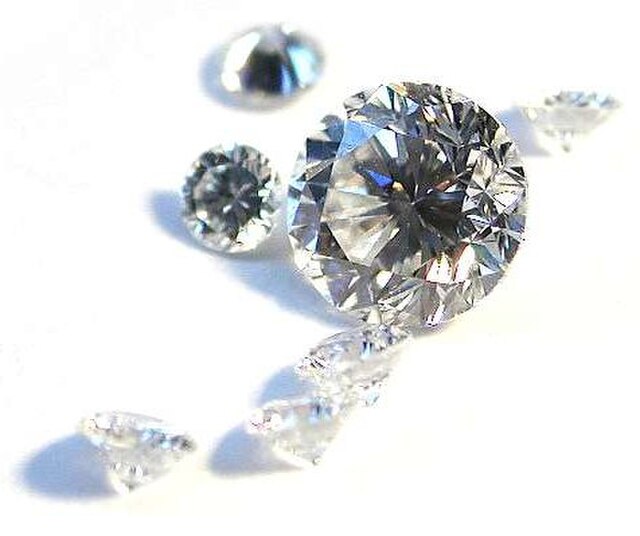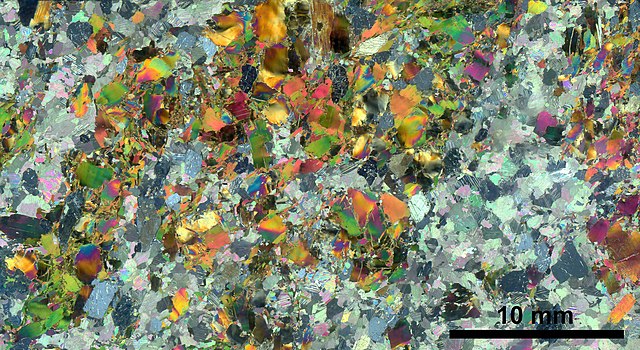Birefringence is the optical property of a material having a refractive index that depends on the polarization and propagation direction of light. These optically anisotropic materials are described as birefringent or birefractive. The birefringence is often quantified as the maximum difference between refractive indices exhibited by the material. Crystals with non-cubic crystal structures are often birefringent, as are plastics under mechanical stress.
A calcite crystal laid upon a graph paper with blue lines showing the double refraction
View from under the Sky Pool, London with coloured fringes due to stress birefringence of partially polarised skylight through a circular polariser
Sandwiched in between crossed polarizers, clear polystyrene cutlery exhibits wavelength-dependent birefringence
Color pattern of a plastic box with "frozen in" mechanical stress placed between two crossed polarizers
In optics, the refractive index of an optical medium is a dimensionless number that gives the indication of the light bending ability of that medium.
Thomas Young coined the term index of refraction in 1807.
Diamonds have a very high refractive index of 2.417.
A split-ring resonator array arranged to produce a negative index of refraction for microwaves
In optical mineralogy, thin sections are used to study rocks. The method is based on the distinct refractive indices of different minerals.








